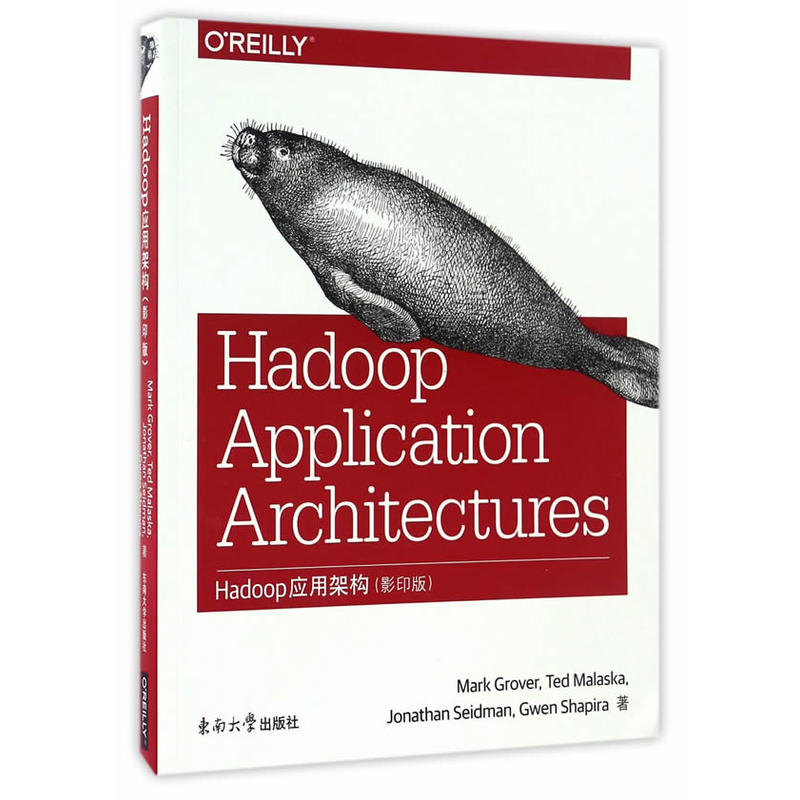
Hadoop应用架构-(影印版)

温馨提示:5折以下图书主要为出版社尾货,大部分为全新(有塑封/无塑封),个别图书品相8-9成新、切口有划线标记、光盘等附件不全详细品相说明>>
- ISBN:9787564170011
- 装帧:暂无
- 册数:暂无
- 重量:暂无
- 开本:32开
- 页数:371
- 出版时间:2017-02-01
- 条形码:9787564170011 ; 978-7-5641-7001-1
本书特色
在使用Apache
Hadoop设计端到端数据管理解决方案时获得专家级指导。当其他很多渠道还停留在解释Hadoop生态系统中该如何使用各种纷繁复杂的组件时,这本专注实践的书已带领你从架构的整体角度思考,它对于你的特别应用场景而言是必不可少的,将所有组件紧密结合在一起,形成完整有针对性的应用程序。
为了增强学习效果,本书第二部分提供了各种详细的架构案例.涵盖部分*常见的Hadoop应用场景。
无论你是在设计一个新的Hadoop应用还是正计划将
Hadoop整合到现有的数据基础架构中,Mark Grover 、Ted Malaska、Jonathan Seidman、Gwen
Shapira编*的《Hadoop应用架构(影印版)(英文版) 》都将在这整个过程中提供技巧性的指导。
使用Hadoop存放数据和建模数据时需要考虑的要素
在系统中导入数据和从系统中导出数据的*佳实践指导 数据处理的框架,包括MapReduce、Spark和 Hive
常用Hadoop处理模式,例如移除重复记录和使用窗口分析 Giraph,GraphX以及其他Hadoop上的大图片处理工具
使用工作流协作和调度工具,例如Apache Oozie 使用Apache Storm、Apache Spark Streaming 和Apache
Flume处理准实时数据流 点击流分析、欺诈防止和数据仓库的架构实例
内容简介
在使用 Apache Hadoop 设计端到端数据管理解决方案时,获得专家级指导。当其它很多渠道还停留在解释 Hadoop 生态系统中该如何使用各种纷纭复杂的组件时,这本专注实践的书已带领您从架构的整体角度思考,这样的角度对于您的特别应用场景而言,是必不可少的。它将所有组件紧密结合在一起,形成完整有针对性的应用程序。为了增强学习效果,本书第二部分提供了各种详细的架构案例,涵盖部分*常见的 Hadoop 应用场景。无论您在设计一个新的 Hadoop 应用,或者正计划将 Hadoop 整合到现有的数据基础架构中,本书都将在整个过程中提供技巧性的导引。
目录
-

AI绘画+AI摄影+AI短视频从入门到精通
¥45.5¥79.8 -

企业AI之旅
¥43.5¥79.0 -

乡村振兴新技术:新时代农村短视频编辑技术基础入门
¥12.8¥32.0 -

机器学习
¥59.4¥108.0 -

基于知识蒸馏的图像去雾技术
¥61.6¥88.0 -

粒子群算法在优化选取问题中的应用研究
¥40.8¥68.0 -

Web前端开发基础
¥36.5¥57.0 -

智能算法优化及其应用
¥49.0¥68.0 -

Photoshop图像处理
¥25.5¥49.0 -

R语言医学数据分析实践
¥72.3¥99.0 -

大模型推荐系统:算法原理、代码实战与案例分析
¥66.8¥89.0 -

剪映 从入门到精通
¥25.7¥59.8 -

游戏造梦师----游戏场景开发与设计
¥68.6¥98.0 -

SAR图像处理与检测
¥35.4¥49.8 -

生成式人工智能(AIGC)应用
¥71.1¥90.0 -

人工智能
¥29.4¥42.0 -

中文版PHOTOSHOP 2024+AI修图入门教程
¥59.3¥79.0 -

WPS办公软件应用
¥25.2¥36.0 -

格拉斯曼流行学习及其在图像集分类中的应用
¥13.7¥28.0 -

轻松上手AIGC:如何更好地向CHATGPT提问
¥40.3¥62.0










